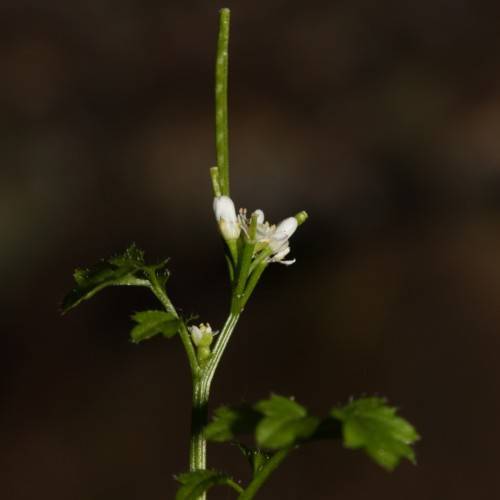
Western Bitter Cress
Cardamine occidentalis
Also Known As - Big Western BittercressWatering:
Minimal
Hardiness Zone:
Sun:
full sun,part shade
Leaf:
Yes
Growth Rate:
Low
Salt Tolerant:
Yes
Invasive:
Yes
watering
It is important to water Littleleaf Bittercress regularly to keep the soil moist. During its active growing season, water it 2 to 3 times per week, making sure the soil is evenly moist. During its dormant phase in winter, water the soil less often, allowing it to almost dry out between waterings. It is not necessary to water Littleleaf Bittercress in the rain. Moderately water the plant early in the morning, when the temperature is cooler, to avoid unnecessary evaporation and to prevent mildew.
sunlight
Littleleaf Bittercress (Cardamine microphylla) is a fast-growing annual plant species native to North America. It prefers sunny or partially shady growing conditions and does best in moist, well-drained soil. In terms of sunlight, it should receive full sun for most of the day, but it can tolerate some shade in the afternoon during the hottest parts of the summer. The ideal amount of direct sunlight for Littleleaf Bittercress is between 8 to 10 hours per day. Littleleaf Bittercress can also tolerate some light early morning or late evening sun. To ensure your plant receives sufficient sunlight, place it in a spot that receives full sun for most of the day and that has some afternoon shade.
pruning
Littleleaf Bittercress requires very minimal pruning in order to maintain a compact and healthy form. If you wish to prune for control of size and shape, the best time to do so is in early spring, before new growth starts and cold frosts are over. Pruning should be done by cutting back the plant to just above a few of its strong, healthy buds. Removing any dead, damaged, or diseased stems can also help improve the overall health of the plant. For further shaping, lightly trim the branches after flowering in mid-spring. For general maintenance in summer and fall, pinch back any new growth to keep the plant neat and compact.
